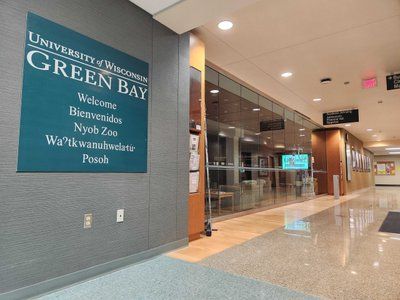MADISON – After 35 years of producing soy sauce and related products in Wisconsin, perhaps it was no surprise that Kikkoman Corp. would choose Madison’s University Research Park as the site for its new research and development lab.
No surprise, that is, until you think about the range of global choices available to Kikkoman.
Although 30 percent of Kikkoman’s soy sauce is produced in Walworth, its Wisconsin plant represents only a portion of the company’s worldwide reach. Kikkoman is a Japan-based food company with about three-dozen facilities from Australia to The Netherlands, and from Singapore to France, and many nations in between. Its subsidiaries and affiliates produce everything from Oriental foodstuffs to wine, with sales of roughly $4.1 billion reported in the fiscal year ending March 31, 2008.
In short, Kikkoman could have put its lab just about anywhere, but it selected Wisconsin. The reasons behind the decision, formally announced Sept. 9, speak to the state’s emerging economic strengths, even at a time when core industries such as paper and auto-related manufacturing are suffering.
- Wisconsin can attract and sustain foreign investment. Yuzaburo Mogi, the company’s CEO and chairman, estimates he’s visited the state some 200 times since the Walworth plant opened in 1973. It was the first Japanese-owned production facility in the United States, and it laid the groundwork for a sister-state relationship between Wisconsin and the Japanese prefecture of Chiba that endures to this day.
- Wisconsin’s R&D expertise is world-class. There is no shortage of leading research universities within reach of Kikkoman’s various plants and offices, but the company wanted a lab close to the source of production as well as a major research institution. University Research Park was the right fit. Its 115 companies and 4,200 employees are clustered three miles southwest of the UW-Madison campus – and about an hour’s drive from Walworth. The lab will focus on the flavor, functionality and fortification of food products, which are strengths for food science researchers on campus.
- Wisconsin has a vibrant food processing cluster. In southern Wisconsin and northern Illinois alone, there are roughly 130 companies that make or contribute to foods that are sold worldwide. Indirectly, these types of companies are attracted by other clusters. The state has related industries, such as tool and die and machine shops, which are necessary to manufacture and repair the equipment used in food processing. Wisconsin’s expertise in paper and plastics is essential for food packaging and shipping.
- Wisconsin’s export growth is robust. Exports totaled about $19.2 billion in 2007, according to state Department of Commerce figures, up from $17.2 billion in 2006 and about $14.9 billion in 2005. Japan is sixth on the trade partner list at $655 million in exports last year. Wisconsin exports have nearly doubled since 2001, when they totaled about $10.5 billion. The weak dollar is a factor, of course, but Wisconsin is also producing goods and services the world wants to buy. That includes agricultural products and tech-based products, which now represent about one-fourth of the total. In percentage terms, Wisconsin exports continue to grow faster than the U.S. average.
The potential for industry and academic collaborations at UW-Madison is obvious, given the size and scope of its research base. But the prospects for similar links exist within many UW System universities and many of the state’s private colleges and universities. The Kikkoman relationship with Wisconsin is unique in many ways, but it’s also a model for strengthening the state’s place in the global economy.
Still is president of the Wisconsin Technology Council. He is the former associate editor of the Wisconsin State Journal in Madison.
###





